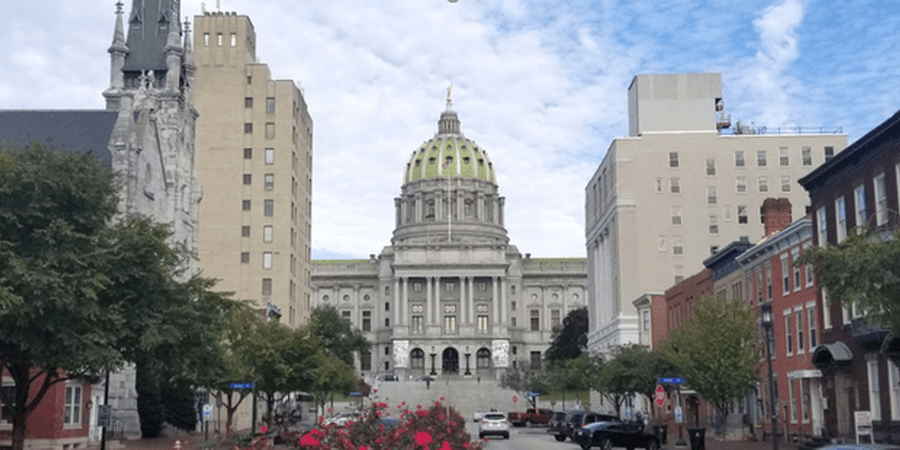Philadelphia, PA
- Located in Harrisburg, Pennsylvania, the Pennsylvania State Capitol is a National Historic Landmark. It is a beautiful symbol of the state's heritage and civic traditions. The building reflects Greek, Roman, and Victorian architecture and art influences.
Pennsylvania State Capitol: A Harrisburg Landmark of Art, Architecture, and History
The Pennsylvania State Capitol Building in Harrisburg is more than just the seat of the state's government; it's a breathtaking architectural masterpiece, a repository of art, and a symbol of Pennsylvania's rich history. Dominating the Harrisburg skyline with its iconic dome, the Capitol Building invites visitors to explore its opulent interiors, admire its artistic treasures, and learn about the workings of Pennsylvania's government. This article provides an overview of the Pennsylvania State Capitol, highlighting its key features, its history, and its significance.
Architectural Grandeur: A Beaux-Arts Masterpiece
The Pennsylvania State Capitol is widely considered one of the most beautiful state capitol buildings in the United States.
- Design: The building is designed in the Beaux-Arts style, characterized by its classical influences, symmetry, and elaborate ornamentation. The current building, completed in 1906, replaced two earlier capitol buildings.
- Exterior: The five-story exterior is clad in Vermont granite, giving it a stately and imposing presence.
- The Dome: The Capitol's most striking feature is its magnificent dome, inspired by Michelangelo's design for St. Peter's Basilica in Rome. Rising 272 feet, the dome was once the tallest structure between Philadelphia and Pittsburgh, dominating the Harrisburg skyline. The dome has been modernized over time.
- Green Roof: The roof is made of green glazed terra cotta tile.
Art Within and Without: Murals, Sculptures, and Stained Glass
The Capitol Building is a treasure trove of art, reflecting Pennsylvania's history and values.
- Murals: The Capitol features numerous murals, including several by renowned Pennsylvania artist Violet Oakley, depicting scenes from the state's history and ideals.
- Sculptures: Sculptures adorn both the interior and exterior of the building. Notably, the main entrance doors were modeled by sculptor Otto Jahnsen and feature busts of important figures in Pennsylvania history.
- Stained Glass: Stunning stained-glass windows add to the building's beauty and artistic richness.
The Heart of Pennsylvania Government
The Pennsylvania State Capitol is the working seat of the state's government.
- House of Representatives: The Capitol houses the chambers of the Pennsylvania House of Representatives, the lower house of the General Assembly. The House consists of 203 members, elected for two-year terms. The Speaker of the House presides over the House proceedings.
- Senate: The Capitol also houses the chambers of the Pennsylvania Senate.
- Supreme Court: The Supreme Court used to be housed at the Capital.
Visiting the Capitol
The Pennsylvania State Capitol is open to the public, offering a unique opportunity to experience its grandeur and learn about state government.
- Tours: Free guided tours are available daily, providing insights into the building's history, art, and architecture. Self-guided tours are also permitted.
- Accessibility: The Capitol Building is accessible to visitors with disabilities.
- Hours: Building is open seven days a week.

Share This Article on Social Media


